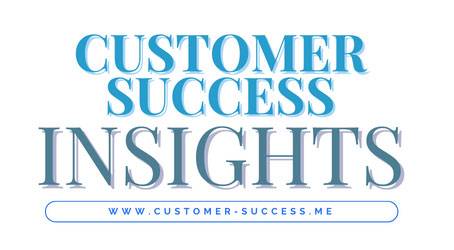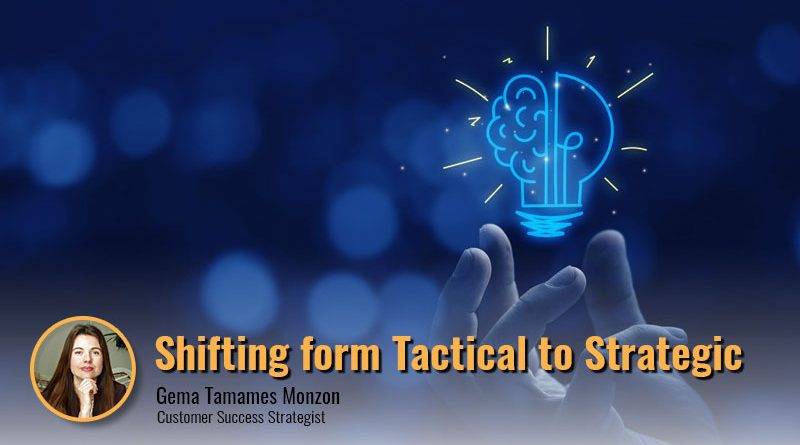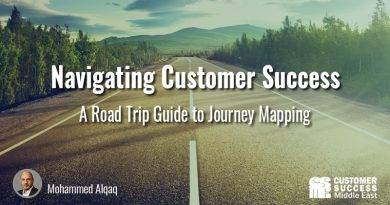Shifting from Tactical to Strategic
Shifting from Tactical to Strategic
Customer Success is a proactive strategic team that helps its customers to achieve their strategic outcomes by using your product or service. The CS team plays a crucial role in ensuring that the customers’ needs are not only met but exceeded, fostering a strong and profitable relationship between the business and its clients. However, the role of a Customer Success Manager (CSM) is fraught with challenges, particularly due to the sheer volume of clients they handle. This often results in CSMs finding themselves embroiled in a myriad of tactical issues, which can detract from their primary goal of nurturing strategic, long-term customer relationships.
The key lies in aligning the efforts of the business with the customers’ needs. CSMs must ensure that their strategic decisions are driven by the customers’ requirements, facilitating revenue generation, and sustainable growth. This necessitates a shift in perspective, from viewing their role as merely a provider of a product or service to a strategic partner invested in the success of their customers.
Your role as a CSM involves fitting your product or service into your customer’s broader picture and for that you will need to start doing these 5 main things:
Moving from day-to-day issues to long-term goals and impact.
I know this might be not easy at times, especially when clients ask you about these very tactical and immediate events.
Something you can do here is create an agenda for the call that puts the strategic points first and share the agenda with the client on the call to make sure you all follow it. So, when the client starts asking about tactical questions, you can say something along the lines of: “yes, I understand this is something we need to talk about, and that’s why I have it in the agenda. We will get to this point, but first I would like to align on…“
Building stronger value-driven relationships.
Demonstrating you have prepared first and looked at their main goals if key to demonstrate that you have their interest at heart.
When conversations revolve around how they are going to achieve their goals, KPIs, and targets, you build good relationships and clients like talking to you.
You should be aiming at getting your clients to the point that they want to talk to you, rather than them talking to you because they have the meeting scheduled in their calendar.
Take this Opportunity to build trust by addressing broader business challenge. Demonstrate that because you know your client, you can see challenges or roadblocks ahead, and make sure you bring them up on time. There is no better way to get your clients to trust you.
Focusing conversations on the impact of the product on the customer's business goals.
Make sure you always tighten your product to their goals, so they cannot imagine their goals being materialized without your product.
This will give you more opportunities to upsell.
Shifting perspective from product to business solutions.
Every time you are speaking about your product, roadmap, or new features, you need to tighten it to their goals, so what you are presenting is relevant for them.
Moreover, this should be presented as a solution to one of their challenges, rather than just a new feature.
Remember that people do not buy products, they buy solutions.
The focus you must have here is to shift the conversation to speak about the future. You can speak about the present, of course, but if you do too much, you will end up speaking tactically.
How you will move from tactical to strategic conversations
Transitioning from tactical to strategic conversations plays a pivotal role in business world. Tactical dialogue often centre’s around immediate actions required to meet certain objectives. On the other hand, strategic dialogue takes a holistic approach, keeping in mind long-term goals and the overarching scenario. There are 5 pillars to navigate and transition effectively, offering valuable insights and practical guidance to help you lift your conversations from being merely tactical to strategically insightful.
Active listening
Listen to understand – do not listen to respond.
Repeat what you hear or summarize what you heard to make sure you understand but also for your client to hear that you are listening.
Strategic questions
These are questions about the future.
What is the strategy of your company for next year?
What is the digital strategy and changes that you will be doing facing the coming year?
How is financially the budget allocated to your department looking at the year ahead?
Questions that explore the needs of the customers.
What is the problem they are trying to resolve?
How were they resolving this problem before?
Why do they want to resolve this problem?
When they solve it, what will they do with the result? – in other words, for what are they working towards? For what reason? To achieve what, exactly?
How does success look like for them?
5 Whys
For each goal or target the customer has, ask why to get another layer of detail there.
After some whys you would uncover the real goal the customer has, more than the immediate and pressing tasks they need to do.
This will allow you to think broader and think more long term.
Questions about their competitors
Who are they?
What are the things they are competing against?
How can your product give them a competitive advantage over their competitors?
Story telling
Connecting product features to customer’s goals
Speaking about what other clients do with your product.
Put names there. It’s not a secret; the clients you work with, are listed in your company’s website (most likely), so if you have a great brand in your portfolio, put it out there.
Speaking about what other clients did.
How a client achieve success with your product.
Share success stories with your clients.
Your clients want to be successful, and they are interested in knowing how success looks like.
Executive presence
You will be directed to the person that you sound like
Be confident about the answers you are giving.
Remember: It’s okay not to have all answers, and it’s okay not to know everything, or answer every single question.
The important thing here is to transmit that you have it all together and they can leave things in your hands.
- Cross-functional thinking
Think about how the conversation you are having, could have a potential impact or be a potential roadblock to other parts of the project for your customer.
“The essence of strategy is choosing what not to do.”
– Michael Porter
Having a deep understanding of your customer’s company, industry, competitors, and challenges is vital. It’s not just about knowing your product or service; it’s about understanding the context in which your customer operates and the hurdles they face.
A fundamental aspect of this strategic approach is articulating value effectively. This means being able to convincingly demonstrate how your solution can help them overcome their challenges and achieve their goals. It’s about showing the tangible benefits and real-world impact of your product or service.
In addition, an in-depth knowledge of the industry and the competitors your client is up against can significantly elevate your conversations. It shows your client that you are not just a product or service provider, but a strategic partner who understands their business environment and can provide valuable insights and solutions.
In essence, shifting from tactical to strategic in customer success requires a broader perspective, deeper understanding, and a commitment to aligning your efforts with your customer’s strategic goals. By doing so, you can transform your role from a mere vendor to a trusted advisor, leading to stronger, more profitable relationships.
Author

Gema Tamames Monzón
An Enterprise Customer Success Manager, help clients in strategic industries, to digitalise their processes and foster change management in rigid environments. More than six years of experience in customer success, and consultancy, and a successful career helping clients to achieve their goals, grown her book of business to three million dollars. A keynote speaker in the CS Collective Festival in London in 2023 and in Cvent Connect 2019. Passionate about helping CSMs to get better at their job and being part of the CS community to grow together.

Stay ahead of the game.
Sign up to the newsletter.
Get all the hottest customer success conversations and talking points landing in your inbox once a month, every month.





